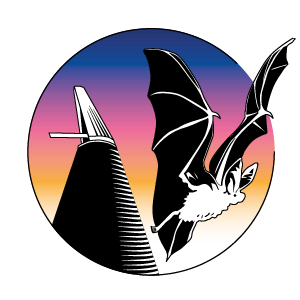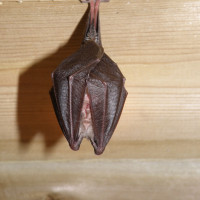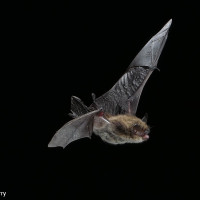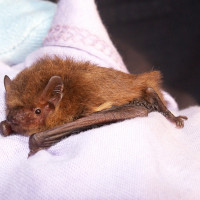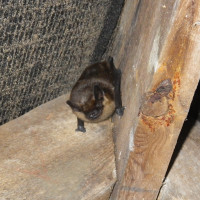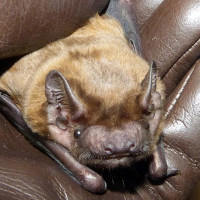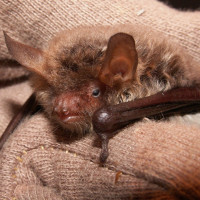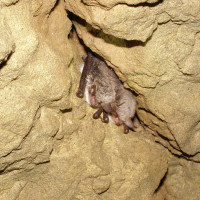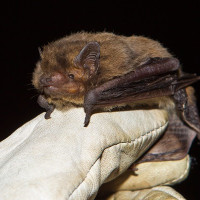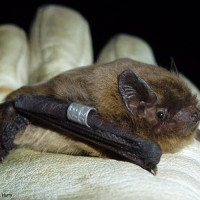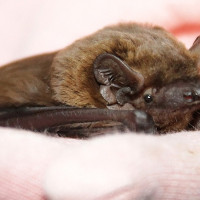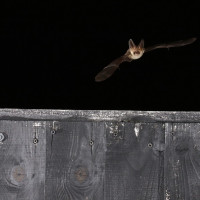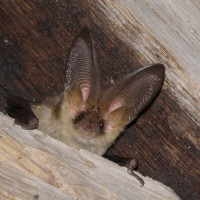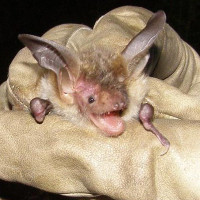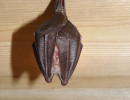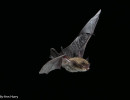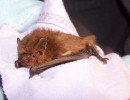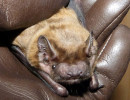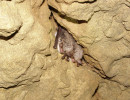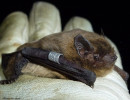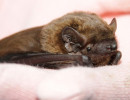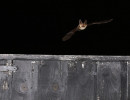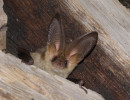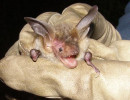Bat Species in Kent
The Kent Bat Group has been working to help protect the county's bats and learn more about them since 1983. Sixteen of Britain's 18 resident bat species have since been recorded in Kent.

Common pipistrelle
(Pipistrellus pipistrellus)
In Kent, as elsewhere, the most abundant bats are the Common and the Soprano pipistrelles. They look very alike, and both can be seen hunting for insects in gardens and along hedgerows just after sunset, flying with rapid twists and turns. Common pipistrelle is ubiquitous, found in most habitats. In summer, maternity roosts can be found behind hanging tiles or barge boards on the outside of houses. The apex of gable soffits is favoured with access to the top of cavity walls.
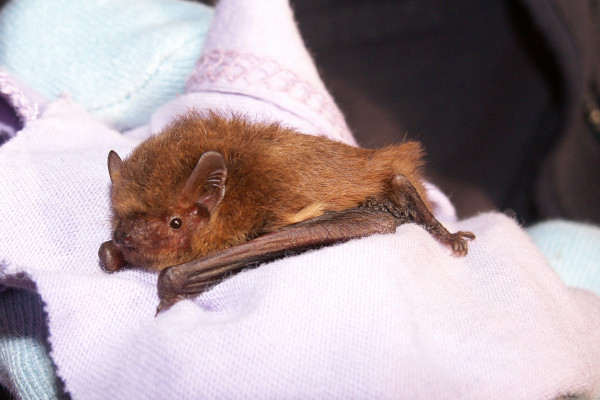
Soprano pipistrelle
(Pipistrellus pygmaeus)
This species favours water bodies for hunting chironomid flies. Maternity roosts tend to be close to rivers, lakes and gravel pits and include hanging tiles, barge boards and gable soffits. Maternity colonies are much larger than those of Common pipistrelle and usually number in the hundreds of individuals.
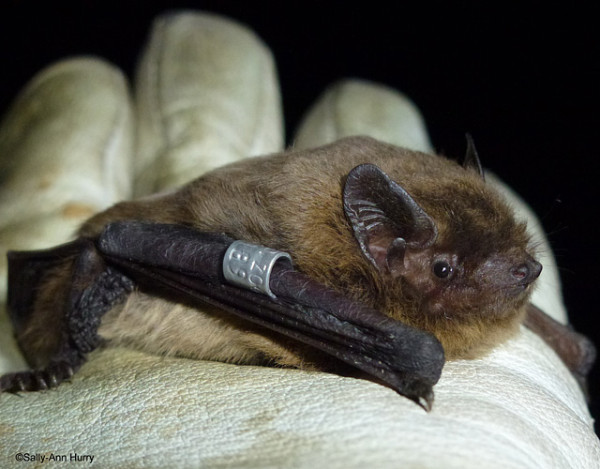
Nathusius’ pipistrelle
(Pipistrellus nathusii)
The bulk of this population is migratory entering the county from the near continent in September and October from Eastern Europe. In September 2016 two Nathusius' pipistrelles which had been ringed in Lithuania six weeks previously were trapped at Oare and Stodmarsh. Most Septembers our bat carers get called by the London Array offices to collect exhausted bats found by engineers at the base of wind turbines off the Thanet coast. We know of one maternity roost in Lydd with lekking males calling from nearby bat boxes and soffits in late August.
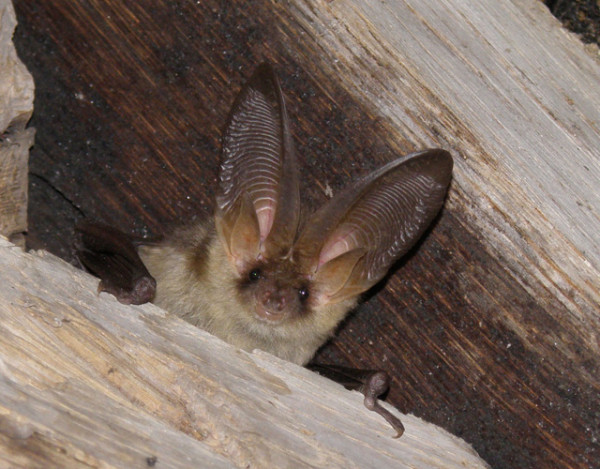
Brown long-eared bat
(Plecotus auritus)
The Brown long-eared bat is widespread in Kent but is seen less often than the pipistrelles. It usually lives in or near woodland and hunts near trees and hedgerows, sometimes flying slowly or hovering to take insects from leaves or grass. Moths are the favoured prey. Late emergence and their immediate use of tree and scrub cover makes them difficult to see. These bats prefer to roost in old houses with high timbered lofts, emerging after dark. They are opportunists and can be found in any habitat where moths are available, even on the very sparsely wooded Isle of Sheppey.

Brandt's bat
(Myotis brandtii)
One of the three cryptic small myotis species, few Brandt's bats have been found in Kent. The third cryptic myotis, Alcathoe was only discovered in the UK in 2010 and the ecology of all three species is currently being researched. A juvenile male Brandt’s has been recorded in Sheerness, Isle of Sheppey, so breeding has been confirmed though no maternity roosts are known.
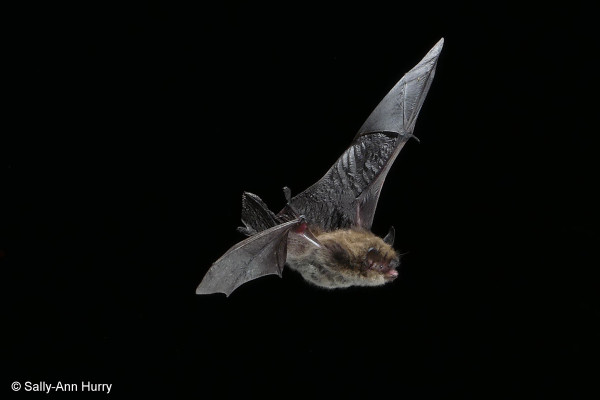
Whiskered bat
(Myotis mystacinus)
This appears to be the commonest of the three species particularly in East Kent and the only species so far found grounded. One maternity roost under hanging tiles is monitored annually and is close to the Blean Woods complex where the bats are presumed to forage.
Click here to see a video of one that came into care in 2025. https://youtu.be/7Mdr6gHTluU
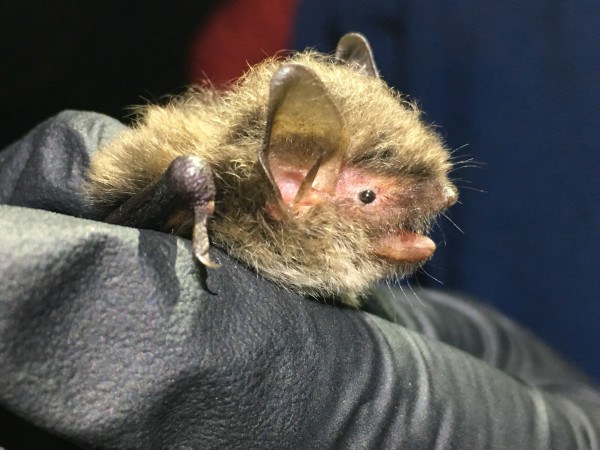
Alcathoe bat
(Myotis alcathoe)
This bat has been actively sought in Kent as part of the small myotis UK wide survey. DNA confirmation has shown it appears to be an old growth deciduous woodland specialist. Breeding has been confirmed in two West Kent canopy woodlands.

Daubenton's bat
(Myotis daubentonii)
Daubenton's bats fly late in the evening. They usually hunt insects over water, flying rapidly just above the surface of lakes and streams but will also forage in woodlands. Although regularly found hibernating underground and recorded foraging widely on lakes and rivers, few summer roosts have been discovered in Kent.
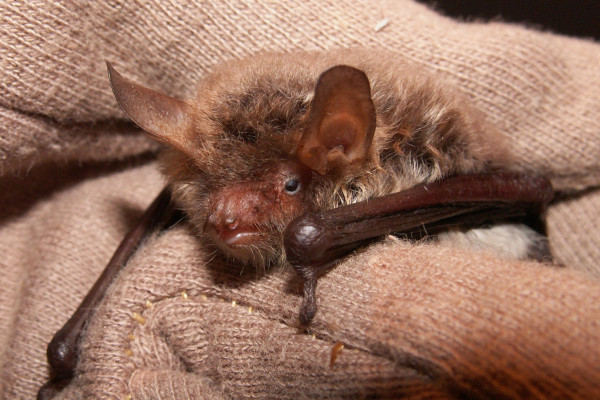
Natterer's bat
(Myotis nattereri)
This bat appears widespread in Kent and is second in frequency to Daubenton’s at our known hibernation sites. Few maternity roosts are known but those discovered are in old barns and churches often using gaps in beams. Droppings indicating roosts are less common than with other myotis species. Foraging habitats include ancient woodland, wood pasture and parkland. We have records from the Romney Marsh indicating use of wetland forage sites. This species is the most frequently encountered myotis at swarming sites in late autumn.
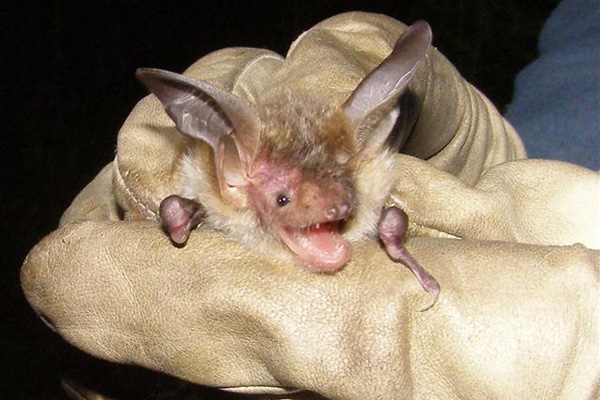
Bechstein's bat
(Myotis bechsteinii)
Bechstein's bat, one of the UK's rarest mammals, was first found in Kent, hibernating, in 2001. A lactating female was recorded in 2009 in canopy oak woodland in West Kent. Subsequently several maternity tree roosts were discovered in 2012 in the same vicinity. Bechstein’s is rare partly through lack of canopy oak woodland in Kent being an old growth woodland specialist.
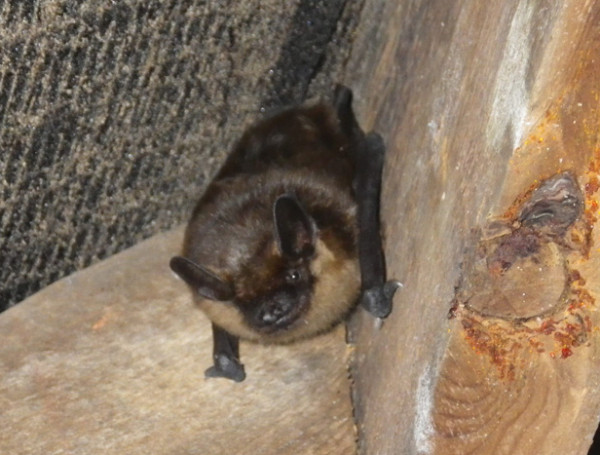
Serotine
(Eptesicus serotinus)
The much larger Serotine bat favours downland areas and grassy meadows and pastures, flying low to catch its chafer and dung beetle prey. All known maternity roosts in Kent are in buildings, most built at the turn of the twentieth century with steep pitched roofs. Twenty years of active biodiverse meadow restoration along the North Downs has probably been the salvation of this species in East Kent.
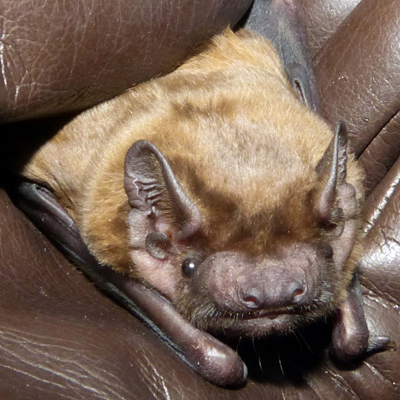
Noctule
(Nyctalus noctula)
The Noctule, another large bat, flies high and fast over trees, pasture, and marshy places. It is almost entirely dependent on trees for roosting. It uses steep dives from height to catch its insect prey consisting of chafer and dung beetles and moths. This species appears to move roosts frequently. It often uses large water bodies to forage such as Stodmarsh and Mote Park Lake. Loss of roosts due to felling of mature trees with suitable hollow trunks and limbs must have impacted the population. Modern industrial farming methods have drastically reduced insect prey availability.
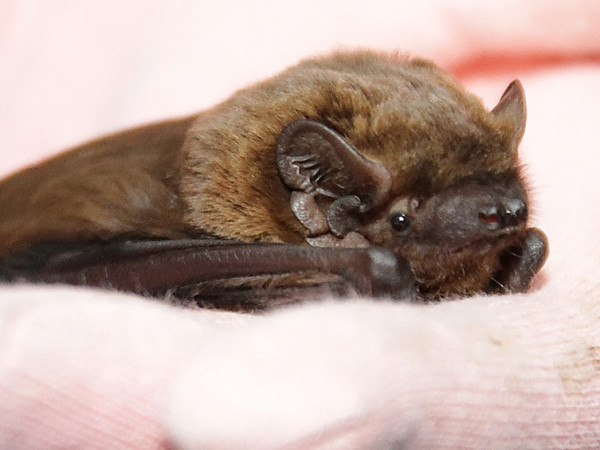
Leisler's bat
(Nyctalus leisleri)
Leisler's bat is one of England's rarer species. A close relative of the larger Noctule, it flies fast, sometimes high with shallow dives, but frequently below tree-top level when foraging. Most records are to the north and west of the Medway Gap, along the North Kent grazing marshes into London and west along the river Medway as far as Edenbridge. It is rare in East Kent. A few maternity house roosts have been found in Strood, Cuxton and Dartford. Juveniles have been recovered from Aylesford and Hartley indicating maternity roosts here. This species moves roosts frequently.
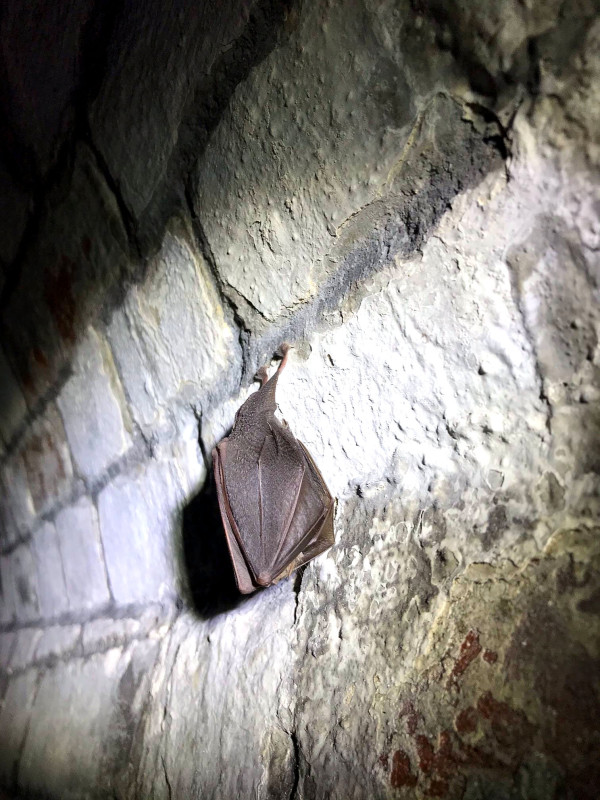
Rare Sightings
A single Greater mouse-eared bat (Myotis myotis), a young male, was found hibernating at Dover in 1985. In January 2025 another individual, as yet to be sexed, was found hibernating at Dover.
In September 2004 a male Pond bat (Myotis dasycneme) was found grounded in Ramsgate. It subsequently died. It was presumed to be a vagrant from the near continent.
Three Kuhl’s pipistrelle bats (Pipistrellus kuhlii) , a male and two females, have been found grounded in recent years, two along the Channel coast and one along the Thames Estuary. It is thought this represents population expansion from the Near Continent due to climate change. It is likely this species will be found breeding in one of the south Kent coastal towns in the next few years.
Greater horseshoe (Rhinolophus ferrumequinum) was recorded in four development sites around Dover in 2019. Sonogram records were confirmed by KBG. The last record was from a static detector placed at a suitable foraging site in Elmsvale in 2020. These records probably represent expansion of this species in the UK and these records are likely to be of pioneering males. The nearest known maternity population is close to Boulogne, France.
Since winter 2020 a single Lesser horseshoe (Rhinolophus hipposideros) has been recorded hibernating in Dover each year. It was here again in winter 2024/2025 for its 5th year.
Showing photos tagged with Bats in Kent from our Photo Gallery
